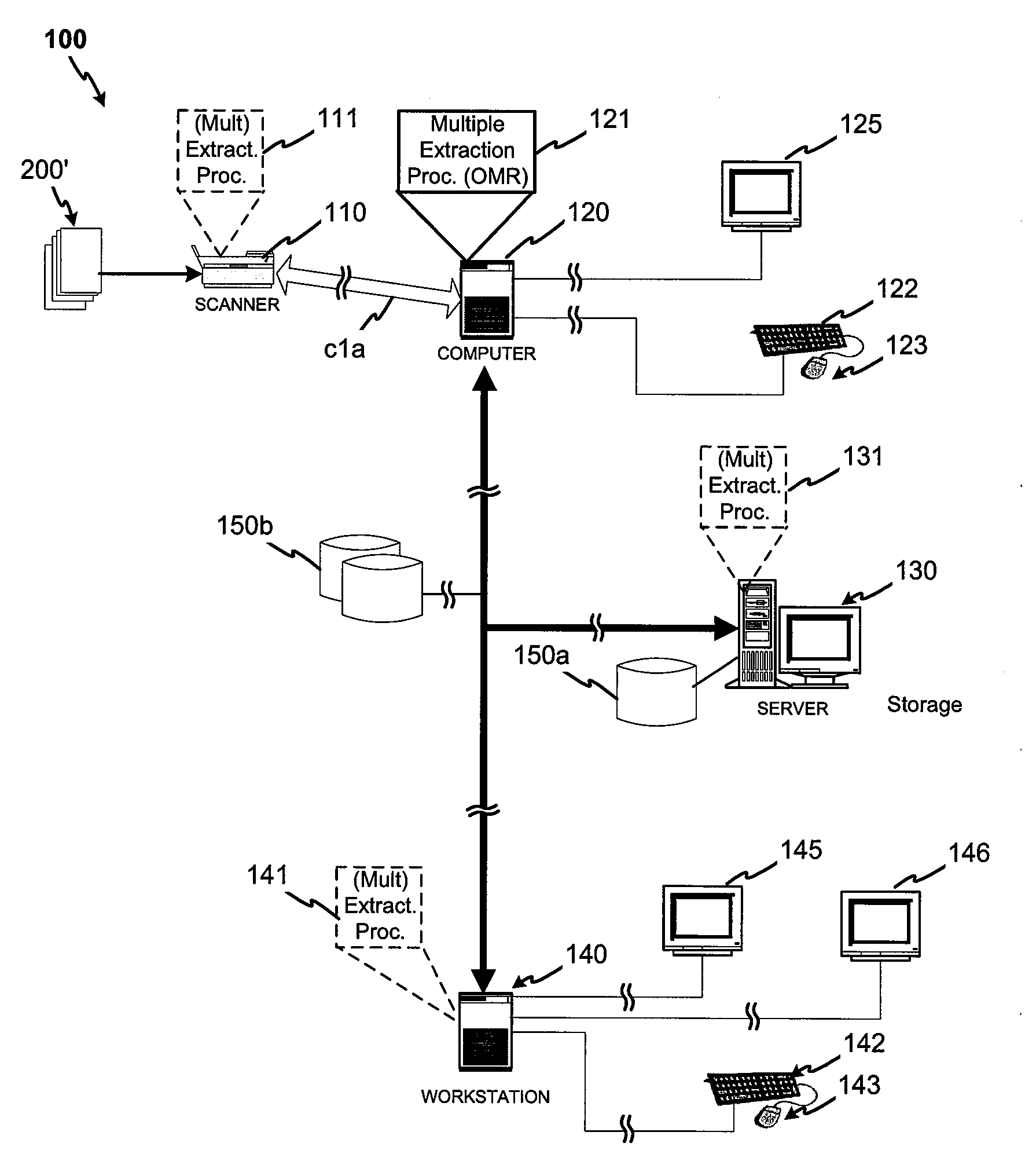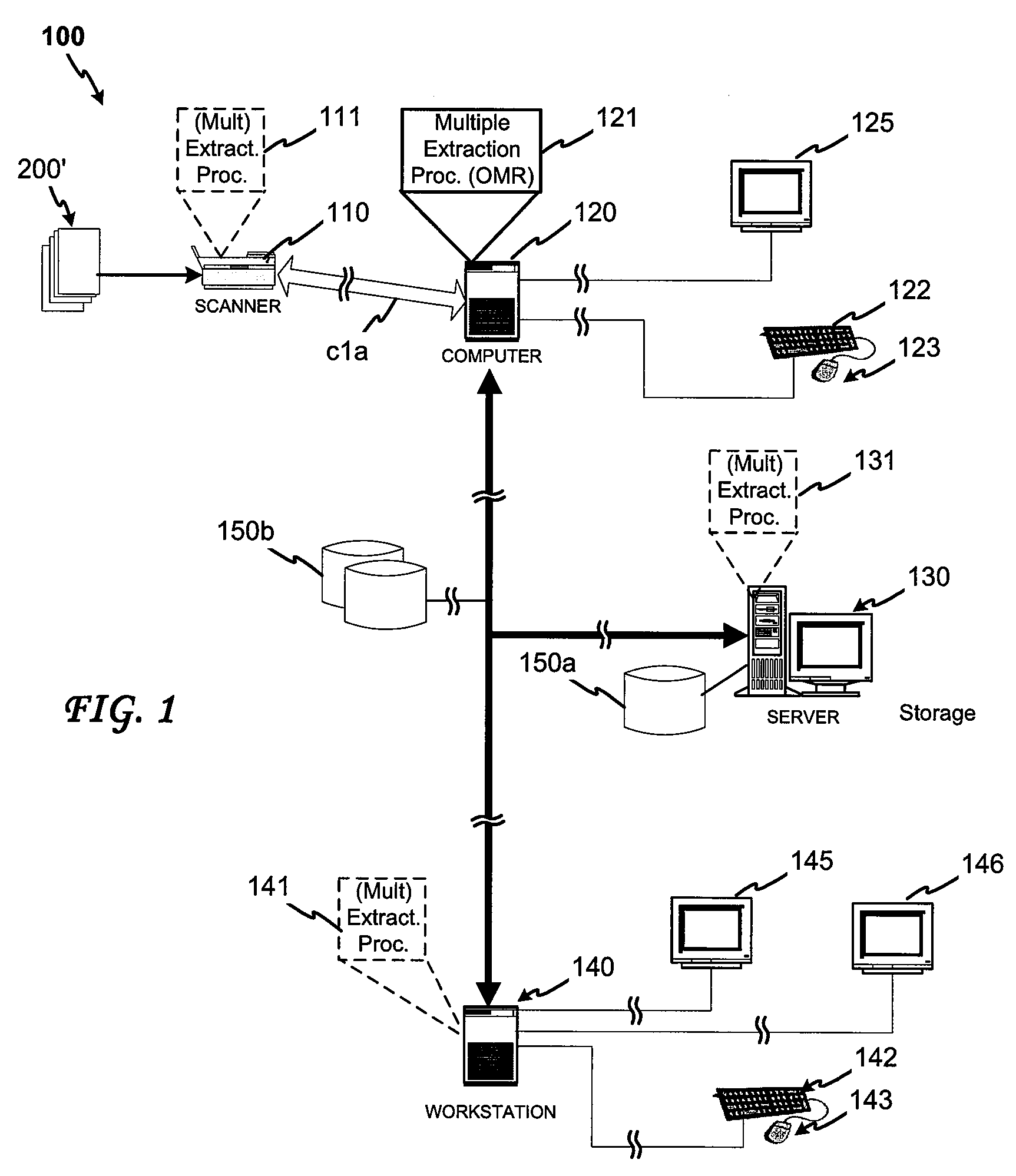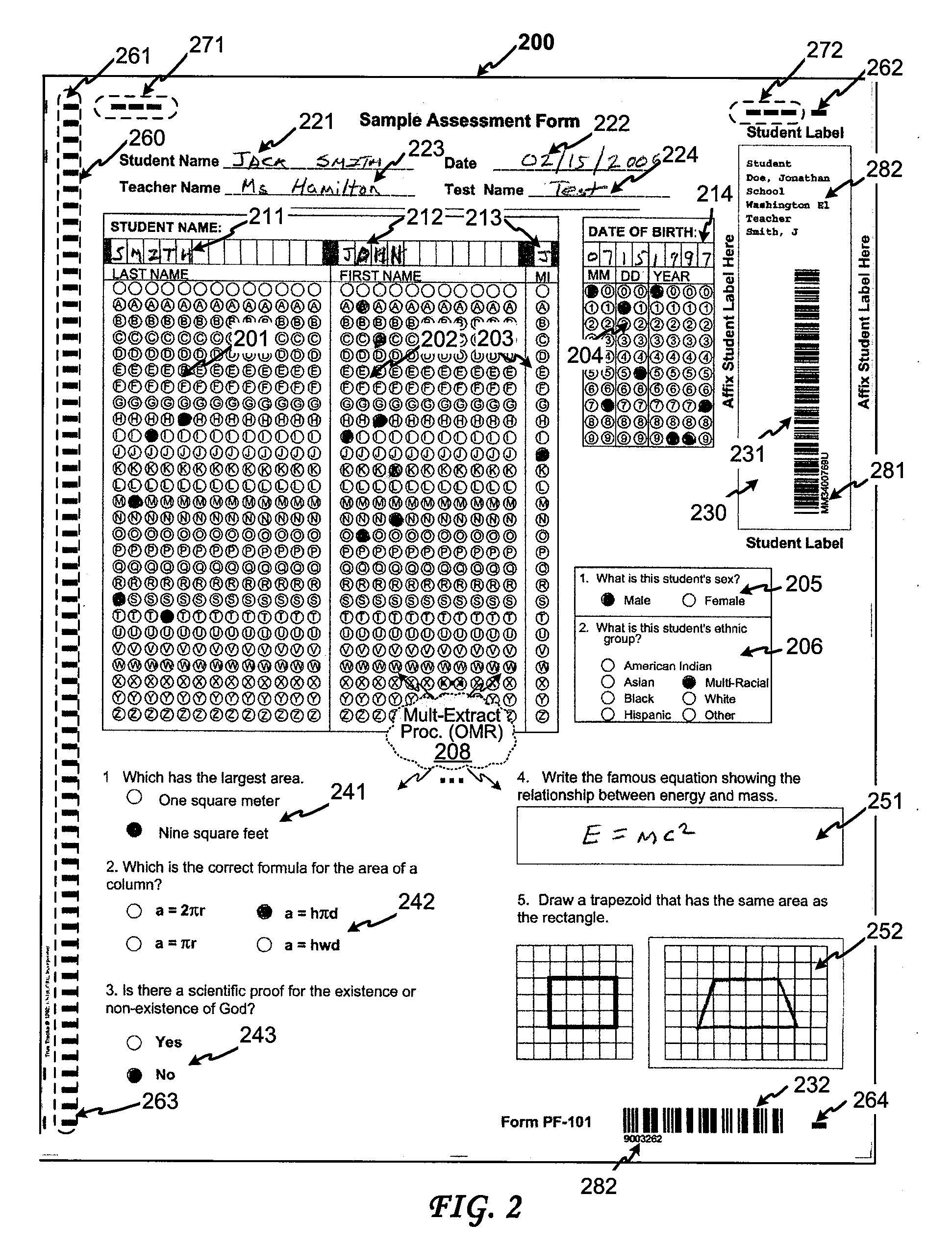Method and system for redundant data capture from scanned documents
a data capture and document technology, applied in the field of paper capture, can solve the problems of current systems being subject to mechanical and other errors, unable to detect errors, and unable to effectively utilize available resources, and achieve the effect of accurately identifying marks, reducing errors, and reducing errors
- Summary
- Abstract
- Description
- Claims
- Application Information
AI Technical Summary
Benefits of technology
Problems solved by technology
Method used
Image
Examples
second embodiment
[0066]In a second embodiment, two different extraction processes each utilize the captured digitized image. One or both of the extraction processes may be conducted by computer 120, one or both of the extractions may be conducted by one or more other computers that have access to the captured digitized image 130 or some combination may be used. (It will become apparent that various embodiments may also conditionally or non-conditionally conduct extraction processes such that one, two or more than two extraction processes may be performed, and that the case of two extraction processes merely provides a more typical example of a fully or partially redundant extraction processing case.)
third embodiment
[0067]In a third embodiment, two or more extraction processing instances may occur sequentially. A first extraction process is always performed in this embodiment, either within scanner 110, computer 120 or within another computer that has access to the captured digitized image. After the first extraction is complete, an evaluation process is conducted, either by computer 120 or by another system 100 computer. The evaluation process may be conducted according to the extracted data and / or a confidence indicator indicating confidence in the trustworthiness of a corresponding extraction if such an indicator was created for the first extraction process (e.g., see below). If the evaluation process determines that the extracted data do not meet a predefined criteria for successful (or sufficiently “trustworthy”) data extraction, then a second extraction process is performed.
fourth embodiment
[0068]A fourth embodiment also provides for utilizing two or more extraction processes. In this embodiment, however, one or more of the extraction process instances may provide for extracting data “offline” after scanning a corresponding document or portion thereof. Such an embodiment may be combined with any of the above embodiments and will typically be used as an “additional process” (or “additional multiple extraction process”) which is invoked when an evaluation process determines that one or more additional extraction processes are needed to achieve successful data extraction (e.g., see above). One such offline process is achieved by causing human evaluators (“reviewers”) to review either the captured digitized image or the original document and enter an appropriate determination or code. Such human review is typically conducted in conjunction with a computer 140 and an appropriate display mechanism 145 and data input device or devices, such as one or more of a keyboard, mouse...
PUM
 Login to View More
Login to View More Abstract
Description
Claims
Application Information
 Login to View More
Login to View More - R&D
- Intellectual Property
- Life Sciences
- Materials
- Tech Scout
- Unparalleled Data Quality
- Higher Quality Content
- 60% Fewer Hallucinations
Browse by: Latest US Patents, China's latest patents, Technical Efficacy Thesaurus, Application Domain, Technology Topic, Popular Technical Reports.
© 2025 PatSnap. All rights reserved.Legal|Privacy policy|Modern Slavery Act Transparency Statement|Sitemap|About US| Contact US: help@patsnap.com



